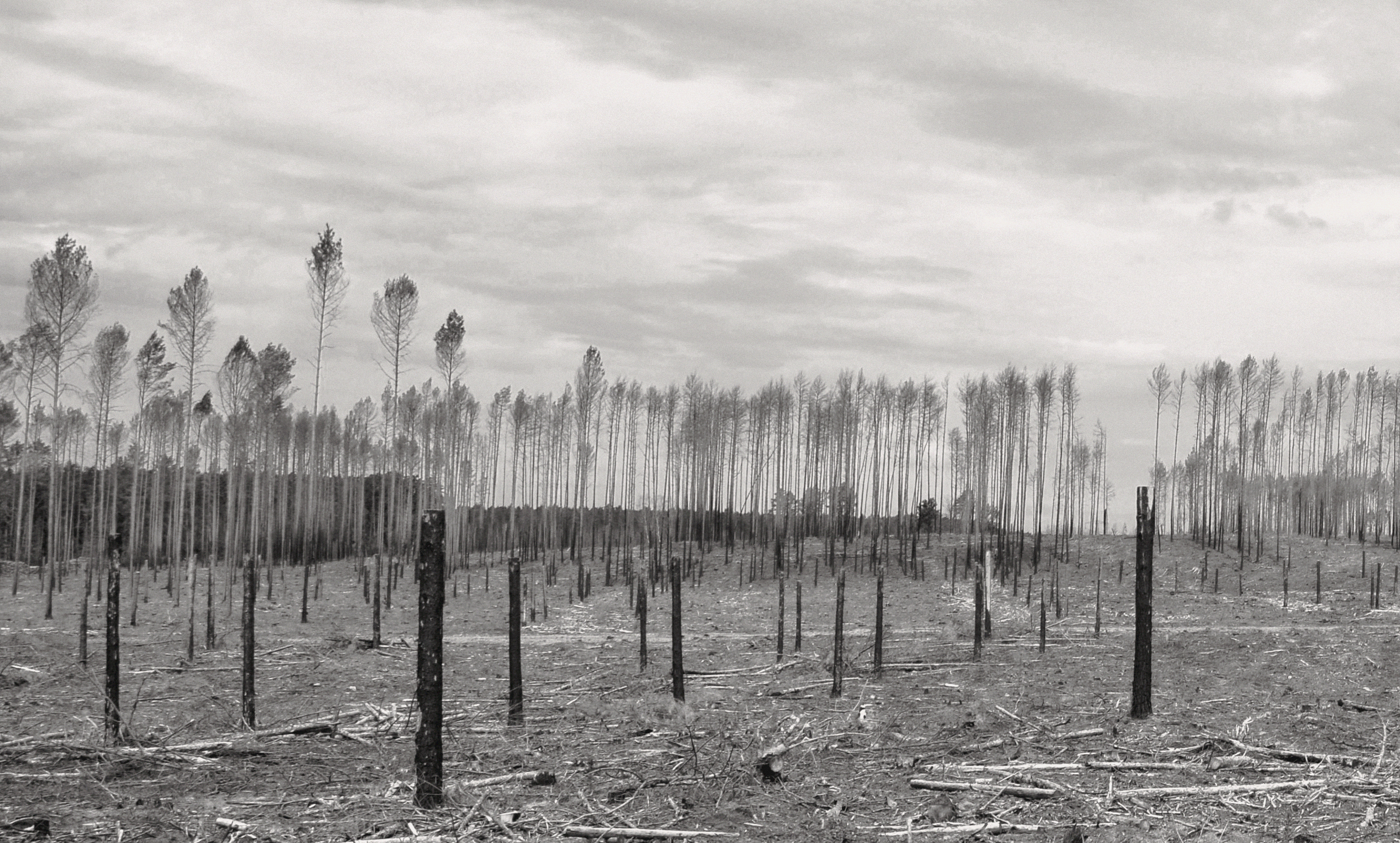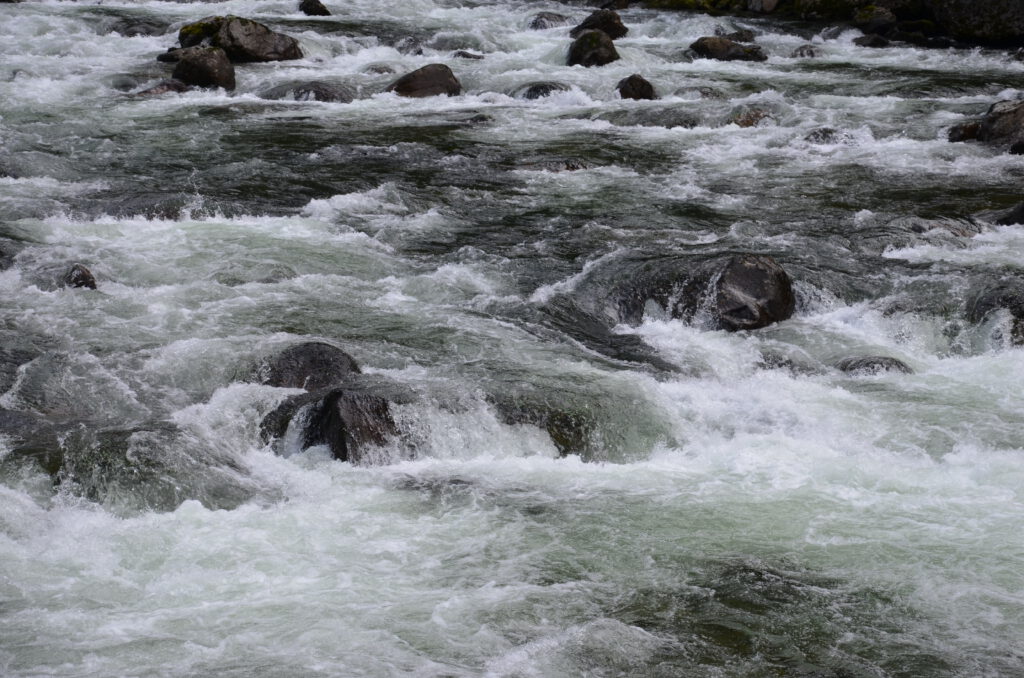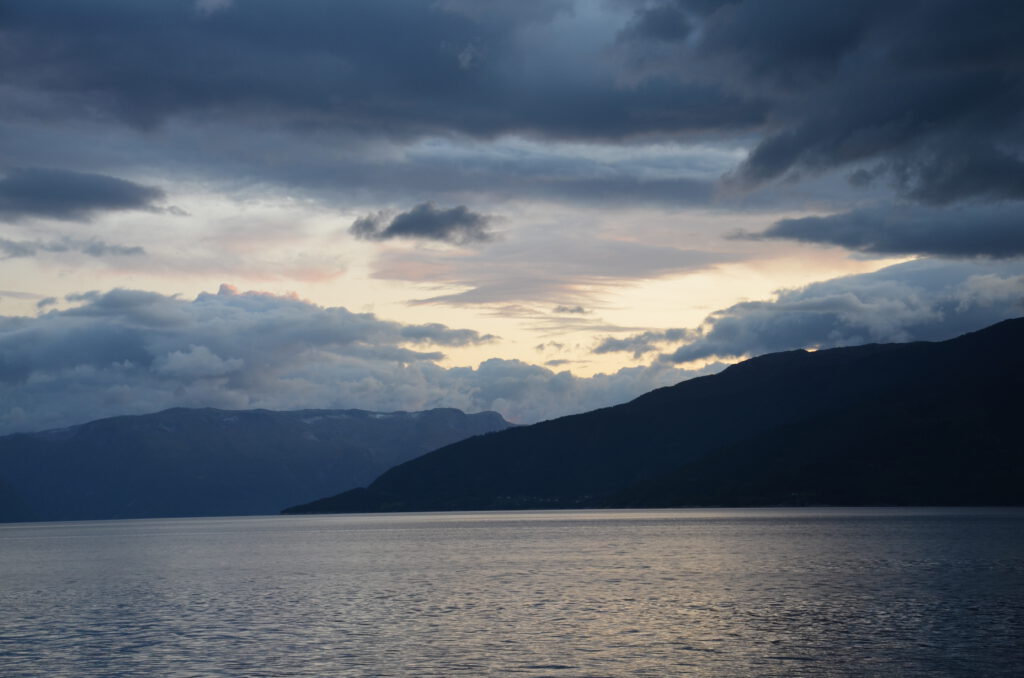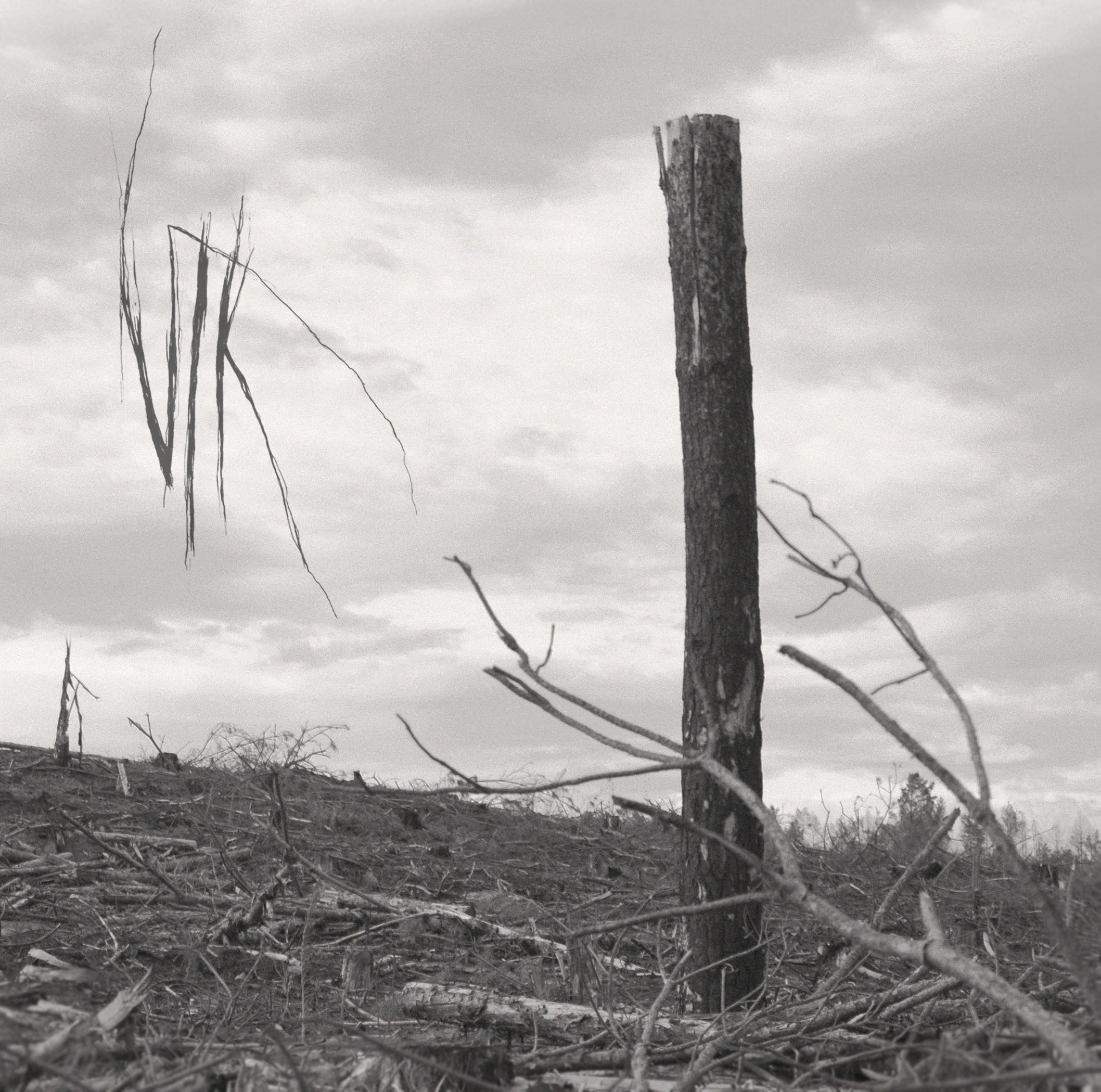Ongoing project - This page will be updated regularly (last update: Nov 29, 2023).
This artistic research project focuses on the climate and biodiversity crisis and asks about the interdependencies, artistic processing possibilities and limits of music in dealing with the crises.
The focus of Artistic Research is on creative music production in the broadest sense. Of interest are processes of compositing and songwriting as well as sound design. All instruments are recorded by Wolf-Georg Zaddach, so that performance aspects are also taken into account.
It is an ongoing project that is linked to the artistic activities of Wolf-Georg Zaddach. These include, in particular, his solo black metal project Vlk, which launched a three-part concept album series under the title Solastalgia with the release of the first part in November 2023 (Grrrow! Records and SPV/Napalm Records), accompanied by photographs and paintings by the artist Sara Zaddach.
The reseach part is based on ongoing research on the topic, and namely on a journal article published in 2022 in the IASPM-D-A-CH journal (in German): http://vibes-theseries.org/zaddach-death-of-mother-earth/.
Methodology
Climate and biodiversity crisis and music
When in 1989 the American thrash metal band Metallica recorded their song „Blackened“ – just one of numerous examples in recent music history (Ecowatch 2020, Meyen 2020; Reimer 2020) – The report Our Common Future was published just under two years ago. This report by the World Commission on Environment and Development, also known as the Brundtland Report after the Norwegian Chair of the Commission, highlights the need for sustainability and intergenerational justice in the face of critical climatic and ecological change processes. Since then, at the latest, it has been clear that prosperity, lifestyle and climate change are strongly intertwined. Preventing ongoing global warming requires change in all areas of life, including all practices associated with music. Production and reception, sharing and storage, making, performing and producing, like many other practices of everyday life, are associated with diverse and sometimes enormous consumption of resources, environmental pollution and even animal suffering.
Climate change, biodiversity loss and environmental sustainability
„Although the debates as to when this era of [anthropocene] began have not been resolved, the consequences of the era are well documented: global warming, melting glaciers and pack ice, rising sea levels and acidification of the oceans, massive extinction of animal and plant species, declines in biodiversity, extreme and increasingly frequent weather episodes, forced migrations of humans, animals and plants, as well social crises.“ (Ribac and Harkins 2020, 1)
The concrete effects of the so-called Anthropocene, a term for the geochronological epoch dominated by humans, are hardly up for debate in 2022 (cf. the critical refutation of frequently occurring relativizing arguments: Gesang 2011, 18-47). Rather, the current and predicted climatic and ecological developments must be understood as multiple crises: Increasing extreme weather, the loss of animal and plant species and, ultimately, far-reaching processes of change and effects on everyday life are increasingly becoming the reality of life for many – as is the realization that we are making a fundamental contribution to this, especially in the Global North, through our way of life.
Climate change can first be described as a complex phenomenon that can be explained scientifically. The Earth’s temperature change then presents itself as an alternating process between enormously hot and enormously cold phases over long periods of time, which we refer to as warm and ice periods (Rahmstorf and Schellnhuber 2019, 17-22). Currently, the Earth is in an upswing or warming phase. The main difference compared to earlier phases lies in the dynamics or acceleration, which must be traced back to a fundamental human influence. The main cause of this are so-called greenhouse gases such as CO2 or methane, which humans have been releasing in enormous quantities, especially since the industrial revolution and the resulting globalized production and economic processes. These greenhouse gases remain in the atmosphere for a very long time, so the warming attributable to them will continue for centuries to millennia (German Climate Consortium et al. 2021, 21). Compared to the reference year 1990, greenhouse gas emissions in Germany fell by 35.1% in the reference year 2019 (Federal Environment Agency 2021a). Nevertheless, global emissions have increased equally over the same period (cf. https://ourworldindata.org/co2-emissions#global-co2-emissions-from-fossil-fuels). Agreements of the international community, such as the Kyoto Protocol of 1997 and the ones that followed, are signalling a political willingness to change. However, concrete measures that would meet the targets would have a significant impact on the daily lives of almost everyone, especially in the post-industrial countries of Europe and North America. Authors such as James Lovelock (2010), David Wallace-Wells (2019) and Mark Lynas (2020) impressively attempt to convey the dramatic consequences to which a continuing rise in temperature can lead.
Climate change is closely linked to practices of consumption and consumption, mobility and living standards. The Federal Environment Agency identifies the consumption of private households as one of the main drivers of emissions, with the category „leisure, entertainment, culture“ in fourth place after spending on housing and energy, food and transport. Expenditure, and thus also direct and indirect environmental pollution, increases with net disposable household income (Federal Environment Agency 2021b). It is becoming increasingly clear that per capita share of emissions reflects social and economic inequality, and that a disproportionate share of emissions globally is caused by the wealthiest 1% of the world’s population (Oxfam 2020). So our current consumption-oriented standard of living is one that exploits natural resources enormously, has high greenhouse gas emissions, and pollutes and destroys ecosystems.
Stefan Rahmstorf and Hans Joachim Schellnhuber (2019, 55-78) provide a broad overview of the consequences of global warming, which, in addition to negative effects on biodiversity, the diversity of ecosystems and species as well as their genetic diversity, also promote new diseases and health impairments. As early as the early 2010s, Bernward Gesang (2011, 36-38) pointed to the enormous social consequences in the form of migration flows, distribution conflicts and potentially even wars. For Germany, a significant increase in heat and heavy rainfall, droughts and forest fires, the warming of rivers, inland lakes and the North Sea and Baltic Sea, as well as rising sea levels are already foreseeable (German Climate Consortium et al. 2021). Compared to the global average and the much-discussed 1.5 or 2 degrees above the pre-industrial era in Germany, the warming is already higher. The regularly updated monitoring report on the German Adaptation Strategy to Climate Change (Federal Environment Agency 2019) therefore records detailed, sometimes profound effects on water, forestry, agriculture and forestry, the construction industry and the tourism industry. So far, culture and music have only played a subordinate role in the report. Nevertheless, it is clear that extreme weather conditions, regional differences and the increase in maximum temperatures with direct health consequences will inevitably have an impact, for example, on the feasibility and design of music festivals and events, as well as on music tourism.
In the IPCC’s 6th Assessment Report, published in April 2022, the urgency of taking action and meeting the 1.5 degree target set in the Paris Agreement is emphasized particularly strongly and drastically (cf. IPCC 2022; United Nations 2021). However, an analysis of 400 possible scenarios for meeting the 1.5-degree target concludes that only a small number of these now appear realistic. In order to achieve the goal nonetheless, a comprehensive change in politics, the economy and society, as well as its timeframe, is of utmost relevance. The situation demands „nothing less than deep societal and economic transformations,“ as the authors summarize (Warszawski et al. 2021, 13). Since only a comprehensive reduction of emissions can contribute to such a transformation, it is clear that the cultural sector must also make a significant contribution. A study published in April 2022 concludes that at least the 2-degree target seems achievable if the agreement reached at the World Climate Summit in Glasgow in November 2020 is adhered to (Meinshausen et al. 2022).
Black metal is beyond music. It exceeds its function of musical genre. It radiates with its sepulchral fire on every side of culture […] Black metal is a suffering body that illustrates, in the same spring, all the human darkness as much as its vital impetus. (Lessourd 2013, pp. 41-42)
Mapping and navigating the sonic dissention and evolution of black metal’s sound through its two main epochs, the second and third wave, or to reference Haela Hunt-Hendrix’s terms, the hyperborean and the transcendental (2015, p. 292), offers us a clear depiction of the ways in which avant-garde compositional structures have been adopted and assimilated by black metal artists. The sense of vastness, the drenching reverb, blast beats on the drums, the sound patterns suggest a celebration of disassemblage, of form-as-disintegration, of beauty as terrifying noise.

Black metal, which is concerned with expressing the deepest and self-dissolving relations between things, the abyssic proximities between and within entities […] vibrationally unhinges the order of things, tritonely crushes all holy trinities, annihilates every binding of the chain of being’. (Masciandaro, 2010, pp. 90-91)
Black metal, with its transgressive sounds and art, seems to be a fitting catalyst of the crises. In view of climate change, environmental problems, and energy, water, and supply crises, German sociologists Klaus Leggewie and Harald Welzer ultimately speak of a „multiple crisis“ (Leggewie and Welzer 2016, 20f.) that is equally biological and cultural. At its core, it is related to the growth logic of contemporary capitalism as a cultural model. This model has reached its limits, whereby „a central myth of Western culture [is] coming under threat – the hybrid idea of having overcome the obstructive dimension of finitude with a world tending toward unceasing growth“ (Leggewie and Welzer 2016, 20). Even though the Clube of Rome addressed the limits to growth as early as the 1970s, conventional economic patterns and associated ways of thinking and behaving can be observed up to the present. Leggewie and Welzer describe this, on the one hand, as a result of „indolence“: an „unbroken risky way of thinking of being able to cause ‚controllable‘ damage for the benefit of a defined purpose and postponing its repair to a later point in time“ (Leggewie and Welzer 2016, 21). They also cite other social psychological causes such as cognitive dissonance and dissonance reduction, which strongly influence what is perceived in the first place (Leggewie and Welzer 2016, 77ff.). In particular, the secure and comfortable living conditions in Western societies have thus far ensured that „[we] have spared ourselves […] from confronting [ourselves] with existential problem situations of the present“ (Leggewie and Welzer 2016, 99). A highly problematic result of this avoidance of confrontation is the denial or negation of the findings of climate research in parts of society (cf. Gesang 2011, 24-29; Rahmstorf and Schellnhuber 2019, 79-87), which is partly rooted in the deliberately deployed postfactual relativization of climate research and political influence by corporations and lobbying since the 1980s (Rich 2019).

A dystopian and consumerist „culture of preventing the future“ (Brand and Welzer 2019, 55) prevails, whose logic of growth and consumption results not only in numerous victims of the animal and plant world, but also of environmental activists and indigenous people – even through contract killings (Global Witness 2021). In the face of such existential threats, it seems almost naïve to bring culture and music into play. Yet it would probably also be misguided to downplay the power of culture, for example, by allowing it to ceaselessly draw attention to the disastrous consequences of our consumer behavior in a globally networked economy. This is why the German Council for Sustainable Development also refers to the important role of culture, without which „the creation of an awareness of sustainability in society (…) cannot be achieved“ (Nachhaltigkeitsrat 2019).
Why mediation AND meditation?
“Affect must be socialised through mechanisms of mediation. Affect is the openness to being effected as directly relational.” (MASSUMI, Brian. 2015. After the Affective Turn: Reassessing Affect. [keynote]. ISEA 2015 <<Disruption conference, 16 Aug, Simon Fraser University, Vancouver, Canada)
„A world where music does not have an environmental impact is a world without music. […] However, if we are to have any hope of addressing the challenge of climate change, we urgently need to become more mindful of the cost of the whole range of consumption behaviours that we usually take for granted, including our participation in music.” (Brennan 2021, 38)
In this context, the strengths of music lie particularly in its affective-emotional and social dimensions and its power to transcend social and geographical boundaries. In this regard, the forms of emotionalization, activation, and persuasion that can be explained in terms of music psychology (Gabrielsson 2011) can offer new perspectives for discursive and affective engagement with crisis and transformation. Josh Wodak (2018), for example, points to science journalist Andrew Revkin, who released a folk-blues inspired singer-songwriter album in 2013. Revkin, himself a longtime climate journalist, highlights the distinction between conveying („conveying“) and communicating („communicating“) that he finds authoritative in processing the climate crisis: while the latter provides information and data, music, moreover, is able to directly convey an idea, impression, perception, or feeling (Wodak 2018, 64).
The various particular communities that form around certain genres, styles, and forms also develop their own dynamic discourses and aesthetics, which can potentially also contribute to a critical environmental awareness far beyond local boundaries. In particular, music that is recorded, available, and often framed by multimedia (music videos, covers, photos, etc.) can, as a transnational phenomenon, evoke a sense of belonging and responsibility to see oneself as part of an increasingly threatened „global biosphere“ (Dibbon 2017, 166; Halfwerk 2021). At the same time, through the affective-aesthetic and social dimensions of both listening to and making music, music can support group cohesion and the development of social creativity, fostering a sense of resilience (Kagan and Kirchberg 2016). Local communities can use shared music practices, among other things, to help each other process climate change-related trauma and adapt to uncertain conditions (Wolcott 2016, 8)
Addressing the crises requires an ethically informed perspective. To be sure, it could be argued that a fundamental transformation would require questioning the material basis and consumption patterns, and ultimately their resource consumption, in musical practices. However, this would leave out the question of what role and importance is attached to music in society and to what extent differences exist between music and other economic goods. Both the positive and the negative effects would have to be considered. The transfer of approaches from other economic sectors to music, such as the stronger focus on locally available goods in the food trade, would prevent a differentiating perspective on successful ecological lifestyles with music. While, for example, limiting food consumption to local consumption may be a solution approach, music fulfills far more profound functions for us. If we were to limit our consumption of music exclusively to local offerings, we would be denying ourselves „the positive contributions of modernity, the very ones that have enabled us to connect to the world, to others, to other lands“ (Ribac and Harkins 2020, 15) – and thus the described connectedness with other regions of the world and their people.
The perspective on responsible lifestyles with music can be expanded and enriched by recent contributions to include ecology and ethics. In addition to fundamental questions of generational justice, sustainable development, and issues of political responsibility and inequality (Gesang 2011; Attfield 2014), approaches that connect to everyday practices are particularly interesting for the context of music. For example, Wilhelm Schmid (2008, 25) argues for a „planetary way of life“ that is driven by a „concern for life on the planet that is in the interest of the self and its concern for itself.“ Schmid formulates a number of approaches to an ecological lifestyle for this purpose as a consequence of a „free life to which the individual, for reasons of prudence, gives the form to take account of ecological contexts and to integrate himself into them“ (Schmid 2008, 67). In Indigeniality, Andreas Weber argues for rediscovering the relational immediacy and sensuality of the thoroughly living environment and nature (Weber 2018, 57-60). Corinne Pelluchon outlines an „ethic of appreciation“ that aims at a reflexive and critical approach to oneself and one’s environment and can lead to more prudent ways of acting and a sense of responsibility through the realization of coexistence and interconnectedness with everything that surrounds us (Pelluchon 2019, 2020a, 2020b). Pelluchon also recognizes a strong connection between aisthesis and a corresponding appreciation, so that coupling everyday practices such as listening to music with knowledge of their impact on nature and ecology, and thus actually transforming these practices in terms of appreciation, seems possible. Furthermore, an international group of primarily humanities and social science scholars, including Pelluchon, has developed the Convivialist Manifesto, a comprehensive and viable vision that touches on all areas of society. Art, and thus music, is understood here as an important space for the development and communication of an „art of living together“ supported in particular and plural forms (Die konvivialistische Internationale 2020, 39, 56). Ludwig Siep (2004, 241, 254-267) further formulates the principle of „diversity of cultures and fair preconditions of their development“ as well as natural diversity, both of which have an intrinsic value. In view of the high dynamics in the formation of new cultural forms compared to biological species, however, a special responsibility of humans for fair conditions of life and development of all living things arises (Siep 2004, 240). This includes at the same time the fair preconditions for corresponding developments in the future.
What all these approaches have in common is that they try to overcome the separation of nature and culture that is deeply rooted in Western thinking, so that we can understand ourselves together with all our cultural practices as part of complex ecosystems. Music then has the potential to have an impact as a resonant and experiential space of this ecological-cultural constitution. In particular, because of the sensory-affective immediacy of experiencing the world and oneself through music, it becomes clear that it can make a significant contribution to ecological transformation not only through direct emission reduction, but also through the aesthetic dimension (cf. Brady 2016).
Artistic Reflection: Transdescendence
Referring to French philosopher Corine Pelluchon’s idea of „transdescendence“, I produced a soundart piece for the first album of my experimental black metal project Vlk. Pelluchon understands the term as a process of contemplation to achieve self-knowledge, an experience and recognition of one’s own vulnerability, but also connectedness with everything that surrounds us and with everything that was, is, and will be.

The piece is a narrative of self-reflection and re-configuring myself in the nature. The natural sounds are field recordings from creeks and places in Norway, in the summer 2019. The trip was transformative for myself in way. For me personally, the troubling deep sounds and under-water-sounds are depressing, inhospitable, threatening. By letting my ego go, I can rise, emerge, and can acknowledge and appreciate the sounds that filled the environment long before our time.

The 2nd example is a music video to the song „Of Wolves and Humankind“ in collaboration with artist Sara Zaddach. It is about the necessary transformation of humankind, a reunification with nature, which appears scary at first sight. However, there is beauty in it. The lyrics of the song are justs sounds, abandoning language as expression of that transformation.
Artistic Reflection: Solastalgia
Solastalgia is a made-up word, formed from Latin (solacium – consolation) and ancient Greek (algos – pain), which was first used by environmental philosopher Glenn Albrecht in the 2000s. Solastalgia refers to the pain and grief of losing our environment: emotions driving to despair, which we bring upon ourselves through our greed and hubris. As a result, the climate and biodiversity crises are intensifying the destruction of the environment and nature.
„Solastalgia I“ is an album (2023) and an artistic reflection and processing of the loss of home, the wealth and diversity of nature, and the livelihoods of all life, which ultimately lead to destruction, agonizing death, and extinction. A dystopian outlook and a warning for the present at the same time.

Lyrics to „Collapsology“
Blood
Pain
Wounded creatures
Fire
Flood
Annihilation
Hunger
Frostbite
Dying of thirst
Face
Fear
Agony
Gale
Drought
Drowning
Plague
Blaze
Mass migration
The blame is ours
Whining
Pleading
Vegetating
Wastelands
Withering lands
Bodies bent in pain
Doomed, damned
The blame is ours
Tainted air
Epidemic alerts
Co-Extinction
Collapse of civilization